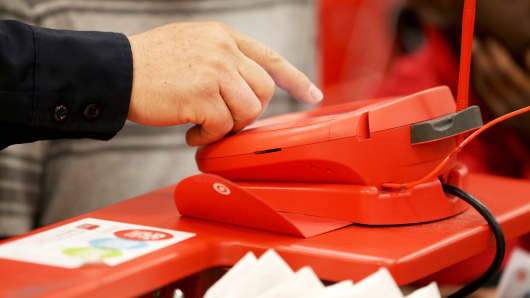One thing that is surprising is the posturing and finger pointing about who is to blame and who is on the side of angels. At the end of the day, we're all saying the same thing — now is the time to migrate to EMV in the U.S.
While magnetic-stripe technology was new technology in the 1970s, that is not the case today. Just look at all of the technological advancements since then — the Internet, smartphones, GPS, to name a few.
The EMV is a standard already widely used in Asia and Europe. Closer to home, American merchants and banks have used other tools and solutions to keep fraud to near historically low levels.
For too many years, different parties have relegated the EMV migration decision to a cost vs. benefits spreadsheet analysis. However, spreadsheets don't consider the cost of losing the public trust, which is immeasurable.
(Read more: US attorney general confirms probe of Target data breach)
If the average consumer doesn't trust the payment method they prefer to use or the merchant where they want to make a purchase, then neither financial institutions nor retailers have a sustainable business model.
In 2012, the major U.S. payment networks introduced their respective EMV migration road maps and timelines, with Oct. 2015 serving as a milestone when the liability would shift to the party — merchant or issuing bank — that was employing the least secure technology.
Earlier this month, I wrote to both our merchant and issuer customers reinforcing our commitment to our roadmap and the 2015 liability shift. As we see it, this migration is about an upgrade that will drive both innovation and security for all parties, most importantly for consumers and cardholders. The fraud liability shifts we have announced provide incentives to migrate to EMV and not a mandate.
From day one, our road map has provided issuers and merchants with the flexibility to manage their business and technology decisions, specifically whether, how and when to implement EMV. And, there's been progress:
- A number of large U.S. retailers have publicly indicated they are re-terminalizing their stores to accept chip cards by October 2015.
- Many U.S. issuing banks have begun to provide cardholders with chip-enabled cards, while planning for a mass rollout over the next two-plus years.
(Read more: Bank executive: Cashless society is a huge threat to our freedom)
Over the past two years, we have been impressed with how the industry has come together to prepare and plan for this migration. This progress should not be discounted, nor should it be derailed as different parties point fingers in an effort to win political or public perception points.
Instead, all involved — networks, merchants, issuers, acquirers and others — should focus their time, efforts and resources on continuing this migration and further enhancing the security of the U.S. payments system.
The lesson of the recent breach is clear — we should not delay the migration to this global standard any longer. While the liability shift is in place for October 2015, it will take many years beyond that point to get all checkout terminals and cards enabled with EMV technology.
Criminals and fraudsters will always try to steal from consumers and corporations. Our job is protecting consumers and businesses against these threats when they make purchases. Of course, no financial transaction can be completely free from the risk of fraud.
EMV will be that first step – a first step that will have the most impact if we move together in unison.
— By Chris McWilton
Chris McWilton is president of North American Markets at MasterCard. Follow MasterCard on Twitter @MasterCardNews.


